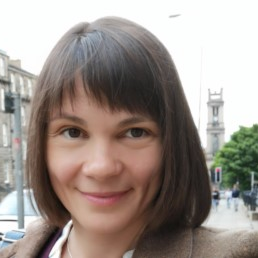Advances and Application of Super-resolution Optical Microscopy
A special issue of Photonics (ISSN 2304-6732).
Deadline for manuscript submissions: closed (15 October 2022) | Viewed by 8063
Special Issue Editors
Interests: super-resolution microscopy; structured illumination microscopy; fluorescence microscopy; image analysis; high spatial–temporal resolution microscopy for life sciences
Special Issues, Collections and Topics in MDPI journals
Interests: fluorescence microscopy; STED microscopy; advanced microscopy techniques in living cells; development of bespoken microscopy
Special Issues, Collections and Topics in MDPI journals
Interests: super-resolution microscopy; biophysics; advanced fluorescence microscopy for life sciences; single-molecule localization microscopy; light-sheet fluorescence microscopy
Special Issue Information
Dear Colleagues,
Over the past two decades, super-resolution microscopy techniques made their way from highly specialized laboratories to turn-key commercial systems widespread trough research facilities. A multitude of novel approaches have been developed to improve performances and make advanced optical microscopes flexible for diverse biological applications and more accessible to general users. However, high-resolution techniques still require specialized knowledge from the user side to properly address biological problems of interest.
With this issue, we are aiming to reduce the gap between microscopy developers and day-to-day users. We will focus on tips and tricks from sample preparation to image acquisition, quality control, data processing and analysis to achieve the best performances and accurate results. This Special Issue targets to gather recent advances in super-resolution microscopy together with its biological applications paving the way to complex biological studies at an unseen level of information.
Dr. Kseniya Korobchevskaya
Dr. Silvia Galiani
Dr. Francesca Cella Zanacchi
Guest Editors
Manuscript Submission Information
Manuscripts should be submitted online at www.mdpi.com by registering and logging in to this website. Once you are registered, click here to go to the submission form. Manuscripts can be submitted until the deadline. All submissions that pass pre-check are peer-reviewed. Accepted papers will be published continuously in the journal (as soon as accepted) and will be listed together on the special issue website. Research articles, review articles as well as short communications are invited. For planned papers, a title and short abstract (about 100 words) can be sent to the Editorial Office for announcement on this website.
Submitted manuscripts should not have been published previously, nor be under consideration for publication elsewhere (except conference proceedings papers). All manuscripts are thoroughly refereed through a single-blind peer-review process. A guide for authors and other relevant information for submission of manuscripts is available on the Instructions for Authors page. Photonics is an international peer-reviewed open access monthly journal published by MDPI.
Please visit the Instructions for Authors page before submitting a manuscript. The Article Processing Charge (APC) for publication in this open access journal is 2400 CHF (Swiss Francs). Submitted papers should be well formatted and use good English. Authors may use MDPI's English editing service prior to publication or during author revisions.
Keywords
- super-resolution microscopy
- fluorescence microscopy
- image analysis
- single-molecule localization microscopy
- STED
- SIM
- structured illumination microscopy
- enhanced resolution
- advanced microscopy







